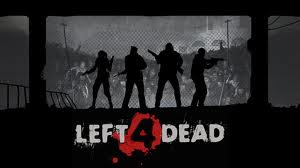Zombies originated through the Haitian Voodoo culture. Zombie, or "zombi" (as said in Haitian), means "spirit of the dead." The Haitian Voodoo priests believed that through black magic you could ressurrect the dead by orally inserting a substance known as "coup padre" into the dead person. According to legend, "a zombi(e) is someone who has annoyed his or her family and community to the degree that they can no longer stand to live with this person. They respond by hiring a Bokor..to turn them into a zombi(e). Once they had been issued the coup padre, the subjects being prepared for their descent into zombidom would appear to die insofar as their heart rate would slow to a near stop, their breathing patterns would be greatly subdued and their body temperature would significantly decrease. The public, thinking that the person was dead, would bury him/ her as if they were a corpse. They would then be exhumed, still alive, by the Bokor and, although their physicality remained intact, their memory would be erased and they would be transformed into mindless drones. "Though still living, they remain under the Bokor's power until the Bokor dies." (http://www.umich.edu/~engl415/zombies/zombie.html // Keegan, www.flmnh.ufl.edu)
Since then, the zombie culture has progressed, especially since the early 1900's. Throughout the decades, the zombie culture has grown and changed in various ways, depending on society's fears at the time being. It started out with black magic and summoning the undead and has now found its way into viral outbreaks of all sorts. Here is a prime example of something that is triggering society's newest obsession with zombies and the undead culture: http://www.left4dead411.com/forums/showthread.php?t=14208 (discussion on a new & unknown virus outbreak in Ukraine late last year)
The Left 4 Dead creators have gone with society's latest views on zombies and turned it into an action-set styled game. So, the most recent style of zombie has been through viral outbreak that runs through the body and can be swapped through blood or saliva transfer in some instances between zombie and human. Left 4 Dead uses the transfer into a zombie through the "Green Flu" virus that went around. Once infected, the person's brain is slowed down and shut off in various places, turning them into flesh-craving buggars.
ZOMBI(E) GALLERY OF GOREY WICKEDNESS:
 |
| me as a zombie for the short film "The Turn" |
 |
| we're coming for you! "The Turn" |
 |
| behind the scenes. "The Turn" |





































